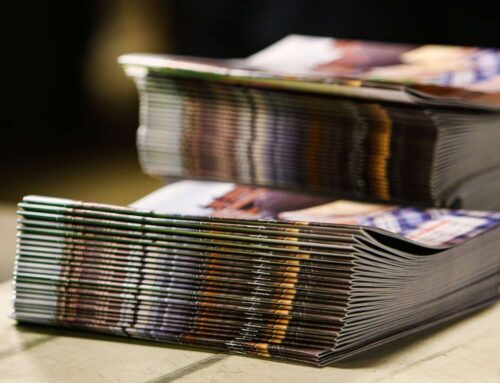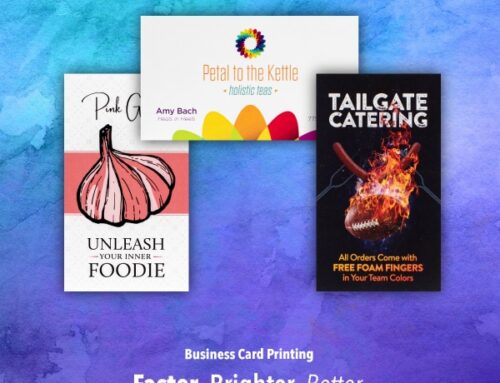Business letterheads may feel like a relic from the days of fax machines and pagers, but they’re just as essential now as they were back then.
Unless you’re running a ghost company one that exists only on paper without much actual business going on you’re probably mailing out letters, proposals, reports, or invoices to employees, partners, vendors, or other stakeholders. A custom letterhead gives everything you send a polished, professional touch.
Back in the day, most people used Microsoft Word to design their letterheads and that worked fine for the time. But now, with your brand image so closely tied to your print materials, a professionally designed letterhead is key to making a great impression.
In this guide, we’ll walk you through the process of custom letterhead printing and explain why teaming up with a Reno printing service can deliver the best results.

Table of Content
How to Design a Standout Custom Letterhead
Why Work with Professional Custom Letterhead Printing Services?
Print Eye-Catching Custom Business Letterheads with Digiprint
How to Design a Standout Custom Letterhead
Most letterheads have a few common core elements:
- Logo
- Company name
- Address
- Contact information (phone number and email address)
- Mission statement or tagline (optional)
But it’s how you arrange and style these elements that set your letterhead apart. Join us as we dive into the five basic steps to business letterhead design.
1. Choose the Right Paper Quality
The paper quality you choose can make a big difference in how your custom letterheads are perceived. Cheap or flimsy paper can detract from even the most stunning design.
Letterhead paper is typically between 80 and 100 GSM (grams per square meter). Anything below this range can feel too lightweight, while anything higher might not go through standard printers as smoothly.
You can consider using textured or recycled paper to make a statement. Textured paper, such as linen or laid finishes, has a tactile quality that adds to the overall experience of holding your letterhead. Likewise, recycled paper can send a strong message about your company’s commitment to sustainability.
2. Use Your Brand Colors
Good branding hinges on consistency. To make sure your custom-printed letterhead aligns with the rest of your printed materials, be sure to use your brand’s primary color palette.
That said, be mindful of how colors appear in print. Bright or bold colors can overshadow the content of your letter. It’s often best to stick with a few primary colors, balanced by neutral tones like white, gray, or soft pastels.
For instance, if your logo has bright red, you might consider using a lighter shade or pairing it with softer tones to avoid overwhelming the design. Use color strategically to draw attention to important areas, such as your logo or contact information, without distracting from the main content.
3. Pick Easy-to-Read Fonts
For readability, sans-serif fonts are your best bet for a letterhead. They’re clean, modern, and easy to read, especially in smaller sizes. Unlike serif fonts like Times New Roman, which have little decorative “tails,” sans-serif fonts, such as Arial, offer a sleek, straightforward look that works well for professional documents.
You might be tempted to use a script font to add some flair. While fonts like Vivaldi or Lucida Calligraphy can look elegant, they’re better suited for formal invites or posters. On a professional letterhead, they can feel out of place and send the wrong message.
4. Incorporate Unique Graphic Elements
Graphics can turn a good letterhead into a great one. However, choosing the right ones requires careful thought and planning.
- Logo
Your logo? Non-negotiable. It needs to be on your letterhead. As per a survey by Renderforest, people recognize logos the most (75%), followed by visual style (60%), and then brand color (45%). Incorporate these into your business letterhead design to reinforce your brand identity.
- Watermarks
Watermarks are faint images or patterns placed behind the text of your letterhead. They offer a more subtle way to incorporate your logo without being too intrusive.
- Borders and Margins
A simple border can frame your letterhead and add structure to the layout. You can experiment with thickness, color, or pattern to match your brand. However, be careful not to make the border too heavy, as this can distract from the main content.
- Geometric Patterns
Small geometric shapes can bring a modern twist to your letterhead. For example, a simple line or dot pattern running along the edge or bottom of the page can enhance the design without pulling focus away from the text.
5. Balance Creativity with Professionalism
For business letterhead design ideas, it’s important to find the sweet spot between creativity and professionalism. While you want it to be visually appealing, it should also look polished and business-appropriate. Going overboard with bold colors or too many design elements can overwhelm the recipient and make your communication look unprofessional.
Think about what you want people to notice first usually, your logo and company name should take center stage, followed by your contact info. The layout should guide the reader’s eye smoothly from one element to the next.
If you’re struggling to find the right balance, feel free to ask for feedback or work with a designer. It’s always a good idea to get a second opinion!
Why Work with Professional Custom Letterhead Printing Services?
We often get questions like “Do I need to get my company letterhead professionally printed? Can’t I just throw something together in MS Word and use the office printer?”
We get it custom letterhead printing can seem like an unnecessary expense at first. However- and we stand by this- it’s an investment that pays off over time.
Here’s why:
-
Higher-Quality Materials
When you use professional letterhead printing services, you tap into a level of quality that regular office supplies just can’t deliver. Premium paper options, like textured, recycled, or heavier stock, immediately make your letterhead feel more substantial and professional. It gives a better impression and shows you care about the little details.
-
Professional Finishes
Sure, you can print a business letterhead in the office, but can you emboss your logo or add foil accents? Probably not. Professional printers offer advanced techniques that give your custom letterheads a polished, sophisticated look.
-
Consistency and Precision
One of the biggest advantages of professional printing is consistency. With a professional service, each print will look just as sharp as the last one. You won’t have to worry about the printing quality or the colors looking off.
-
Save Time and Hassle
Between formatting issues, running out of ink, or paper jams, printing your custom letterhead stationery can be more of a hassle than you bargained for. By working with a professional printing service, you save yourself the trouble. They handle everything from start to finish, so you don’t have to.
-
Expert Advice
When you work with professionals, you’re also paying for their expertise. Not sure which paper weight is right for your needs? Debating between a matte or glossy finish? Professional printers can offer tailored recommendations to make sure your custom company letterhead looks its best.
Print Eye-Catching Custom Business Letterheads with Digiprint
There you go! That’s everything you need to know to create a business letterhead. Remember, a professional-looking letterhead can strengthen credibility and recognition for your brand, so make sure you create one that lets your business stand out.
Or team up with the printing experts at Digiprint! We can help you create a custom-printed letterhead that perfectly captures your brand’s identity.
Contact us today, and let’s get creative!




